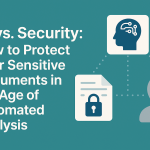Explore the fascinating history of signatures, from ancient pictographs to modern-day e-signatures. Understand why signatures are important and how they have evolved over time.
The History of the Signature
Signatures have played a crucial role in human history, serving as a unique representation of an individual’s identity and intent for thousands of years. From ancient pictographs and clay tablet inscriptions to the sophisticated e-signatures of today, the means by which people authenticate documents and artworks have evolved dramatically. This article delves into the fascinating journey of the signature, from its earliest known uses in ancient civilizations to its present-day electronic counterparts, highlighting pivotal moments and cultural influences that shaped its development over millennia.
1. Ancient scribe
Among the earliest known examples of signatures used to validate identity date back to as far as 3000 BC. Cultures such as the Sumerians and Egyptians began utilizing a series of pictures and symbols, known as pictographs, to represent the identity of the creator. A notable instance from this era is a Sumerian clay tablet from around 3100 BC, bearing the markings of an administrator named Kushim.
This artifact is one of the earliest definitive examples of using words and symbols to denote identity. These early signatures were not limited to names but included symbols, seals, and even fingerprints, serving as a unique proof of identity and intent. Such practices laid the foundational understanding of signatures that would continue to evolve through subsequent civilizations.
2. Greek and Roman Influence
The evolution of signatures further advanced during the Greek and Roman periods. Around 1200 BC, the Greeks adopted the Phoenician alphabet, which consisted of 22 consonants and no vowels. Over the following centuries, this alphabet transformed into the Latin alphabet through cultural exchanges and adaptations. Despite the widespread use of written language, Romans often relied on signet rings to create wax seals for authenticating documents, particularly among emperors and high-ranking officials. This method added a layer of security and exclusivity to the authentication process.
However, by 1069, signatures in the Latin alphabet began to emerge, marking a significant shift in documentation practices. A notable example is the signature of El Cid, a nobleman and military leader from medieval Spain, who signed his name to validate a donation to the Cathedral of Valencia. These developments laid the groundwork for the contemporary use of signatures, bridging ancient practices with evolving legal and administrative needs.
3. First Document Signed in the Latin Alphabet
The tradition of using signatures in the Latin alphabet began to crystallize in the 11th century. A pivotal moment in this evolution came in 1069, with the earliest recorded instance of a signature in the Latin alphabet. This momentous event featured the nobleman and military leader El Cid, a prominent figure in medieval Spain. By signing his name on a donation document to the Cathedral of Valencia, El Cid authenticated the transaction, establishing a lasting precedent. This act not only marked a significant advancement in documentation practices but also underscored the growing importance of the signature as a tool for validation and authenticity. Through this practice, formal and legal documents began to adopt the signature as a standard, paving the way for its widespread acceptance in various cultural and administrative contexts.
One of the earliest known forms of a signature is the Rota used by popes to authenticate documents, which dates back to at least Pope Leo IX in the 11th century (Wikipedia). Persian minature artists from the middle ages also signed their work from the XIV century.
4. Signatures Obtain Legal Status
The legal recognition of signatures marked a significant advancement in the formalization of identity verification and authentication processes. One of the most notable milestones in this journey was the enactment of the Statute of Frauds Act by the English Parliament in 1677. This legislation mandated that certain types of contracts, including those involving wills and grants, be signed to be considered legally binding. This move was driven by the need to curtail fraudulent activities and enhance the reliability of documented agreements.
As a result, the signature transitioned from being a mere mark of identity to becoming an essential element in legal and commercial transactions. The impact of this statute resonated globally, influencing legal systems to incorporate the requirement for signatures in various formal and administrative processes. By the time John Hancock signed the Declaration of Independence in 1776, the signature had firmly established itself as a critical component in validating agreements and safeguarding against fraud.
5. A Modern Signature
The concept of the signature has continued to evolve in the modern era, adapting to new technologies and societal changes. By the late 20th century, the means and methods by which people authenticated documents and agreements had undergone significant transformations. The rise of digital communication and the introduction of the fax machine in the 1980s had already begun to change traditional practices, allowing contracts to be scanned and sent electronically across great distances. This shift necessitated changes in legislation both in the United States and the United Kingdom to accommodate and legally recognize these digital exchanges. Moreover, advancements like the chip and pin system revolutionized personal security in banking, effectively replacing the handwritten signature with a more secure and fraud-resistant method.
These technological developments culminated in the global acceptance of electronic signatures in the early 2000s. With President Bill Clinton’s enactment of the E-Sign Act in 2000, electronic signatures gained legal validation in the United States, an action soon mirrored by the UK and the European Union. This marked a significant moment in the history of signatures, as it acknowledged the growing importance of digital transactions in a rapidly globalizing world.
Today, e-signatures are not only common in legal and business contexts but are also essential tools for speeding up processes and enhancing security. Whether used for signing contracts, deeds, or other critical documents, e-signatures offer a quick, secure, and verifiable means of authentication, continuing the legacy of the traditional signature in the digital age. By providing a unique proof of identity and intent, e-signatures continue to uphold the integrity of transactions in our digitally interconnected society, ensuring authenticated exchanges remain efficient and trustworthy.
Want More? Sign-Up to Our Newsletter
Stay informed and ahead of the curve with our expert insights, industry news, and tips on the evolution and future of signatures. By signing up for our newsletter, you will receive regular updates right in your inbox, covering a range of topics from the historical significance of signatures to modern-day electronic signature technologies. Our curated content is designed to help you understand the nuances of document authentication, navigate legal requirements, and leverage new technologies to enhance security and efficiency in your personal and professional dealings. Don’t miss out on the knowledge that can empower you to make informed decisions and stay compliant in an increasingly digital world. Subscribe today and join our community of well-informed readers.
Start Sending Documents with MyDocSafe Today
The evolution of signatures has culminated in the widespread adoption of electronic signatures, ensuring swift, secure, and verifiable document processing. MyDocSafe offers a seamless platform to harness the benefits of this modern advancement. By using MyDocSafe, organizations and individuals can securely send, sign, and manage documents from anywhere in the world, transforming time-consuming processes into efficient workflows. This powerful tool not only enhances security but also expedites transactions, making it an essential component for contemporary business practices. Embrace the future of document authentication with MyDocSafe and experience the convenience and reliability of e-signatures today.


